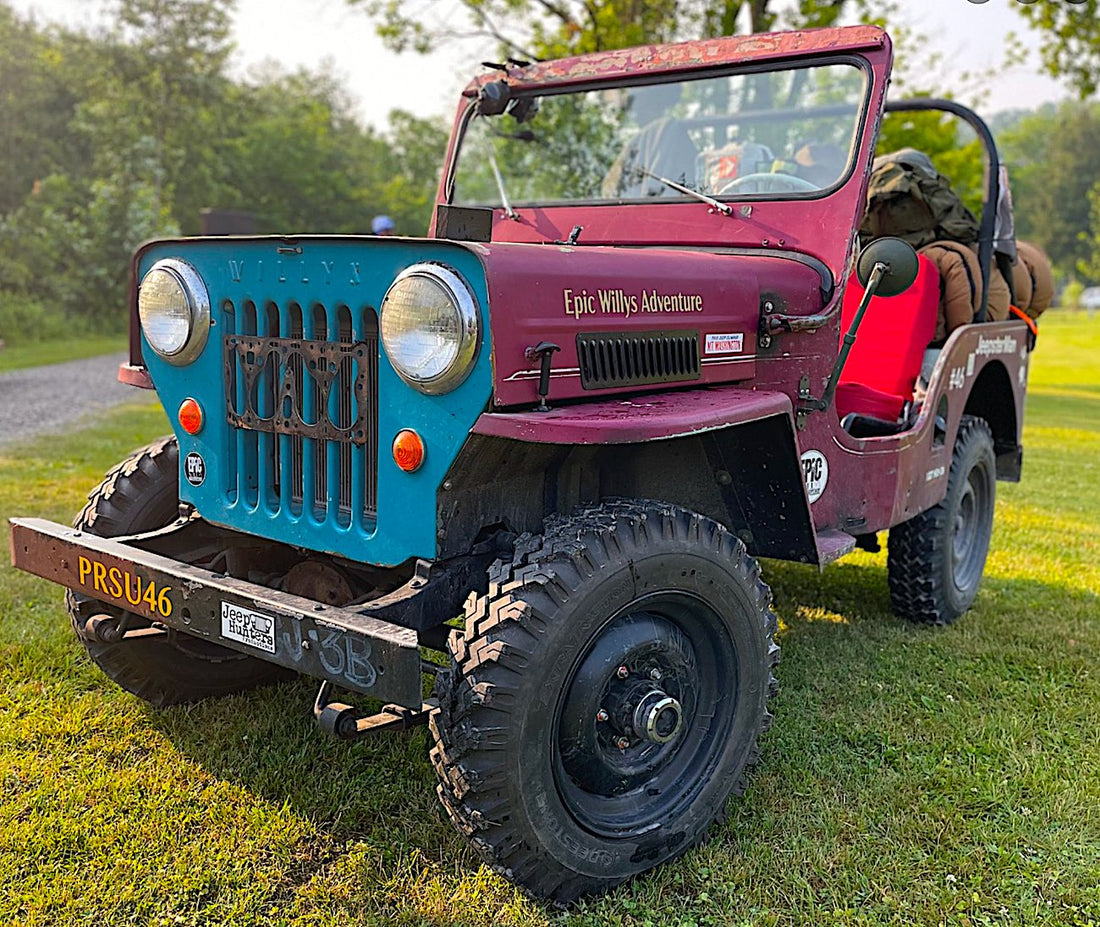Tech Specs CJ-3B 1953-1964: An Introductory Overview
Click on any link below to shop now for Willys CJ-3B Jeep parts:
The Willys CJ-3B, spanning from 1953 to 1964, stands as a testament to the evolution of rugged utility vehicles, tracing its roots back to the iconic Willys Jeep lineage. Emerging in the post-World War II era, Willys Motors recognized the need for a versatile, off-road workhorse that could seamlessly transition from military to civilian life.
Post-War Transformation:
In the early 1950s, the CJ-3B emerged as an evolutionary response to its predecessor, the CJ-3A. The notable shift in design was marked by the introduction of a taller hood, a necessary modification to accommodate the powerful F-head Hurricane engine. This design alteration not only distinguished the CJ-3B but also symbolized a forward leap in performance and capability.
Design Innovations:
The CJ-3B's design innovations were not merely functional but also marked a departure from its wartime predecessors. The inclusion of a single-pane windshield and a distinct hood design reflected a commitment to enhancing both aesthetics and functionality. These modifications weren't just cosmetic; they were a testament to the ongoing commitment to excellence in the realm of off-road vehicles.
Adaptable Applications:
As the CJ-3B hit the production lines, its adaptable nature found application in diverse fields. From agricultural tasks to utility functions, the CJ-3B became a reliable companion for those navigating challenging terrains. Its robust construction and off-road prowess even made it a canvas for customization, birthing specialized variants for various industries.
Year by Year Evolution:
1953-1955:
The initial years of the CJ-3B witnessed a significant departure from its predecessors. The integration of a 12-volt electrical system and the "Willys" script on the hood set the tone for a new era in Jeep history.
1956-1960:
Aesthetic refinements characterized this phase, with a redesigned hood featuring a prominent "Willys" emblem and updated fenders. The CJ-3B embraced external changes while refining its 4WD system and suspension.
1961-1964:
Entering the early 1960s, the CJ-3B underwent subtle cosmetic tweaks, including alterations to the grille and hood design. The repositioning of hood latches and modifications to the windshield frame signaled a commitment to streamlining its appearance.
Legacy and Impact:
The CJ-3B's legacy is not merely confined to its production years. It became a symbol of adventure, resilience, and the indomitable spirit of exploration. Its enduring popularity among off-road enthusiasts speaks to its timeless design and the pioneering spirit it encapsulated.
General Specifications:
- Length: 129 29/32” (3.30 m)
- Width: 59“ (149.8 cm)
- Height (Overall): 72” to 75” (183 to 190.5 cm)
- Mass (curb weight): To be added
- Mass (dry weight): To be added
- Tire Size: 6.00-16, Front 26, Rear 28 psi
- Electrical System: 6 Volt, post-1957 12 Volt
- Transmission Type: 3-speed manual, T-90
- Transfer Case Type: 2-speed, Dana 18, manual
- Front Suspension Type: 2 semi-elliptical leaf springs under the front axle
- Rear Suspension Type: Multiple leaf springs mounted longitudinally and parallel to the frame
- Front Axle Type: Dana 25, solid axle
- Rear Axle Type: Dana 44, full-floating
- Wheelbase: 81” (205.7 cm)
- Engine Type: 4-134 “Hurricane” F-Head Motor (Inline 4)
- Displacement: 134.2 cubic inches (2.2 liters)
- Horsepower: 72-75 hp
- Torque: 114 to 135 lb-ft
- Payload Capacity (on road): 800 to 1,000 lb
- Payload Capacity (cross country): 700 to 800 lb
- Fuel Capacity: 10 U.S. gallons (37.9 liters)
- Operational Range: 150-200 miles on a full tank of fuel
- Maximum Speed: 55-60 mph
- Ground Clearance: 8.375 inches (21.27 cm)
Engine Number Location(s):
- Stamped on the passenger side of the engine block, near the distributor.
Serial Number Location(s):
- Driver's side of the firewall, near the master cylinder.
- Left front frame side rail, just below the grille, near the front leaf spring hangar.
| Year | Beginning Serial Number | Ending Serial Number |
| 1953 | 453-GB2-10001 | 453-GB2-18810 |
| 1954 | 454-GB2-18811 | 454-GB2-42025 |
| 1955 | 455-GB2-42026 | 455-GB2-73266 |
| 1956 | 456-GB2-73267 | 456-GB2-118738 |
| 1957 | 457-GB2-118739 | 457-GB2-183063 |
| 1958 | 458-GB2-183064 | 458-GB2-243240 |
| 1959 | 459-GB2-243241 | 459-GB2-33424 |
| 1960 | 460-GB2-33425 | 460-GB2-45809 |
| 1961 | 461-GB2-45810 | 461-GB2-54548 |
| 1962 | 462-GB2-54549 | 462-GB2-61061 |
| 1963 | 463-GB2-61062 | 463-GB2-68602 |
| 1964 | 464-GB2-68603 | 464-GB2-73295 |

